Why you need a butterfly garden – and how to plant it
Have you considered planting your borders as a ‘butterfly garden?’
We all know it’s important to support bees, because the decline in pollinating insects is potentially such a threat to our food supply.
But butterflies are an important sign of a healthy eco-system. And they, too, are pollinators.
According to Jane Moore, author of Planting For Butterflies, The Grower’s Guide to Creating a Flutter, ‘butterflies are a good barometer of the environment generally, because they’re sensitive to environmental changes. There’s a lot that can go wrong in a butterfly’s life cycle, from the weather to someone spraying the plants that caterpillars feed on.’
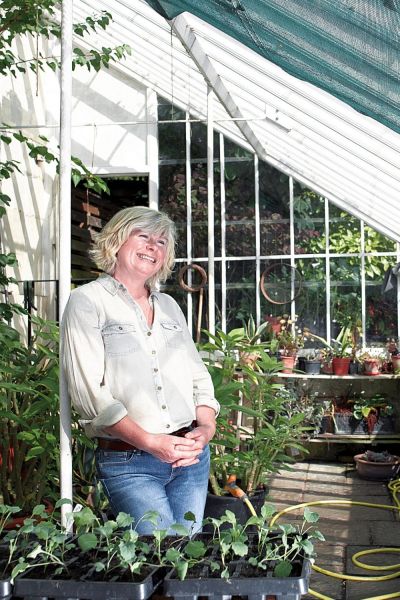
Jane Moore, head gardener of the Bath Priory Hotel and author of Planting for Butterflies.
So if you see butterflies in your garden, that’s a sign that your eco-system is generally healthy.
Planting for Butterflies explains what butterflies do for our gardens. They pollinate flowers, they’re part of the natural food chain, providing food for birds. And – if they survive – they add greatly to the joy of our summer gardens.
Planting for Butterflies also explains how butterflies grow, live and reproduce, with illustrations of common butterflies so you can identify them.
And, Jane says, ‘many of the plants loved by common butterflies are easy to grow. Plant the right plants and the butterflies will come.’
Note: I bought my copy of Planting For Butterflies at Amazon, where I am an affiliate so if you buy, I may get a small fee, but it doesn’t affect the price you pay. You can also buy it directly from the publishers, Quadrille or order it from your local bookshop.
So what to put in a butterfly garden?
Jane explains that there are two kinds of plants butterflies need.
Adult butterflies live off the nectar of specific flowers, so they need these in order to feed.
And they lay their eggs on ‘host plants’ which have the leaves caterpillars need for food once they hatch. Once again, different types of butterflies have different host plants, although nettles host a number of species.
Planting For Butterflies lists the individual butterflies and which plants they need both for nectar and as a host plant for eggs.
And there are a number of ‘butterfly-friendly’ plants that will attract common butterflies easily. Everyone always thinks of buddleia, the ‘butterfly bush’, but echinacea, sedum, asters, sweet rocket, honesty, lilac and herbs like mint are also popular with different kinds of butterfly.
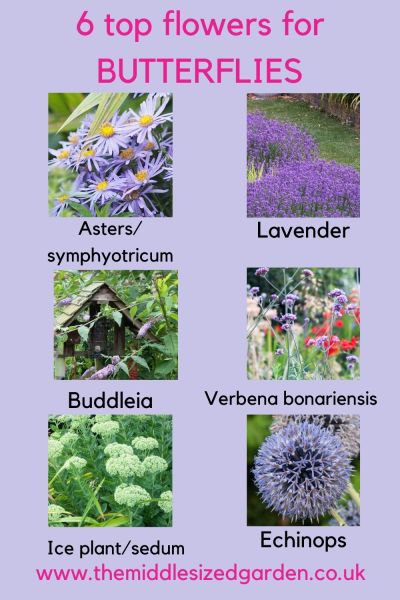
Plant these to attract common butterflies, says Jane Moore.
What else do you need for a butterfly garden?
Avoid using spray pesticides if you want butterflies in your garden.
The other thing you can do, says Jane, is to raise the blades on your mower. And mow the lawn less often. She is head gardener for the Bath Priory Hotel. ‘There are two lawns,’ she says. ‘One is a croquet lawn, so I keep that carefully maintained, green and smooth, treated with lawn treatments.
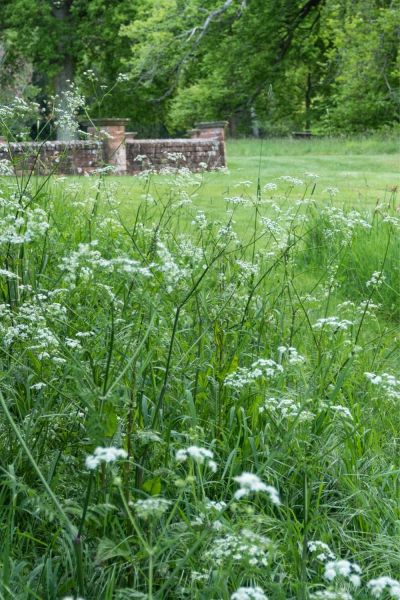
Leave part of the lawn to turn into meadow, says Jane, and mow the lawn part with higher blades.
The other lawn is part wild-flower meadow. But half of that is still conventional lawn. Here she raises the mower blades. And she doesn’t use any lawn treatments on it. Flowers like clover, daisies and birdsfoot trefoil flower below the level of mowers. They provide nectar for butterflies and other pollinating insects.
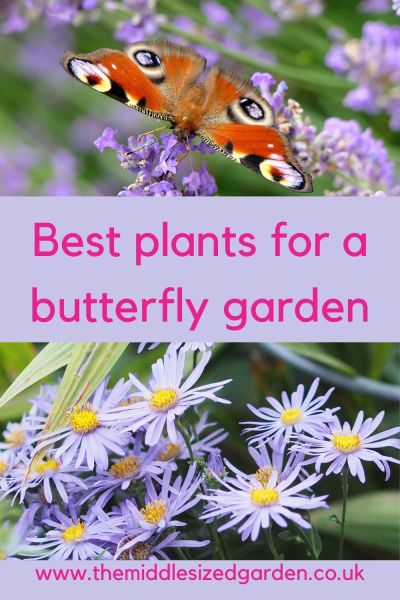
Low growing flowers in a lawn are just as helpful to butterflies as larger flowers in a border, like these Aster amellus ‘King George’.
‘Interestingly, the croquet lawn really suffers in dry spells but the lawn I mow less often withstands drought much better,’ she says.
Here’s a post with tips on how to turn a small part of your lawn into a mini meadow.
However, you don’t need any special habitats in a butterfly garden, she says. You don’t need to build bug hotels or put up nesting boxes. It’s the plants that are the key.
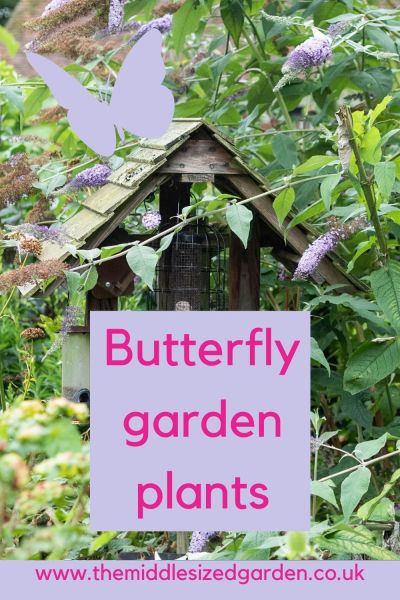
You don’t need any special habitat for butterflies. They just need plants, like this buddleia.
Nettles…
When I first heard about butterfly gardens, I was disheartened to hear that nettles are the top butterfly-friendly plant. However, I have been leaving a few nettles in corners in the garden, rather than pulling them all out immediately. I asked Jane if I was storing up trouble for myself.
‘That’s what I do in the Bath Priory Hotel garden,’ she says. She leaves an inconspicuous patch of nettles if it’s growing where no-one will really notice it. ‘Nettles aren’t like bindweed or ground elder, so they won’t take over.’
What about caterpillars in my veg patch?
Jane admits that while gardeners love butterflies, nobody likes caterpillars munching their brassicas. ‘You can use butterfly netting,’ she says, ‘but I have known butterflies to get in and their caterpillars strip all the leaves back completely.’
I’ve had this experience too. One year I tried growing kale under netting. By the end of the season, it was clear that I had not shut cabbage white butterflies out with the netting, I’d shut them in. Where their caterpillars were very happy, stripping my kale back to its bare ribs.
Jane picks the caterpillars off by hand because spraying would damage beneficial insects. And she recommends companion planting.
Companion planting is when you plant something that is more attractive to the pest you’re trying to control. If, for example you plant nasturtiums near your cabbages, the butterflies are more likely to pick the nasturtiums. ‘But don’t plant them too near,’ Jane advises.
‘And there seems to be some evidence that butterflies which have hatched on a particular host plant will prefer to lay their own eggs on that host,’ says Jane.
So, in theory, you could raise generations of cabbage white butterflies which prefer nasturtiums to cabbages.
In practice, you may decide that it’s worth sharing your cabbages with caterpillars in order to have a butterfly garden.
When do you see butterflies?
I was rather worried that I had only seen one butterfly in my garden this year. But Jane says that most butterflies are out in July, August and September. ‘There are a few early butterflies, such as the Orange Tip, too.’
Do butterflies like strawberries?
Butterflies don’t eat, they only drink. But they do like the juice from rotting fruit, so Jane says this is another thing you can do. Leave some fruit rotting on the ground or put going-over strawberries and apples out for them.
The Big Butterfly Count
The Big Butterfly Count runs from Friday 17th July to Sunday 9th August. Sign up on the Big Butterfly Count website. Once signed up, you choose a 15 minute period in which to count the number and types of butterflies you see. You can do this in your own garden, someone else’s or in a public garden or open space.
More about Planting For Butterflies
Planting for Butterflies helps you understand what butterflies need and why, as well as what to plant for them in order to create your own butterfly garden.
Written in a highly readable and engaging way, it is a book you can dip in and out of to improve your knowledge of the natural world in your garden. Jane is also a gardening writer, and won the British Garden Writers Guild ‘Journalist of the Year’ in 2007.
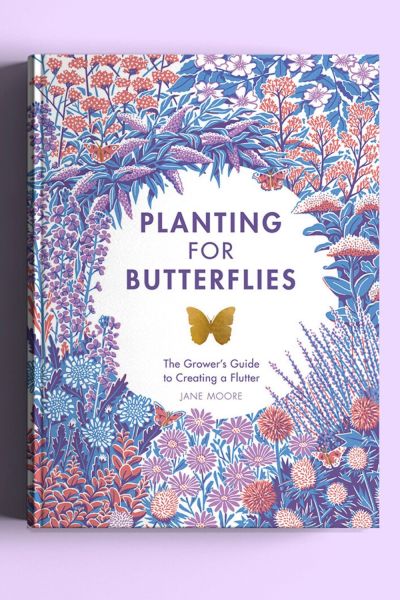
Planting for Butterflies by Jane Moore explains what butterflies need and how you can attract them to your garden.
And it’s not just for people with big or middle-sized gardens. There are sections on how to attract butterflies in small gardens, container gardens and even window boxes.
Planting for Butterflies is also a pretty book, with attractive illustrations of some of the common butterflies you’re likely to spot. It’s a good read for anyone wanting to garden in a more eco-friendly way, and would also make an ideal present.
More wildlife garden tips…
If you’d like to make your garden more wildlife friendly, this post explains what a wildlife garden really needs.
And because sustainability is at the heart of supporting wildlife, you may also be interested in How to Create an Easy Sustainable Garden.
I’m often asked for recommendations so I have made lists of gardening books, products and tools I use myself on the Middlesized Garden Amazon store.
For example, there is a list of Wildlife Friendly Gardening products and books, where you will find organic slug control, hedgehog houses and other books on wildlife such as Jean Vernon’s The Secret Lives of Garden Bees.
This week’s video – the midsummer garden
This week’s Middlesized Garden video shows you round the mid-summer garden, with the main gardening jobs for the next few weeks.
Pin to remember butterfly garden tips
And do join us every Sunday morning! See here to follow by email and we will land in your inbox in time for your first cup of tea.
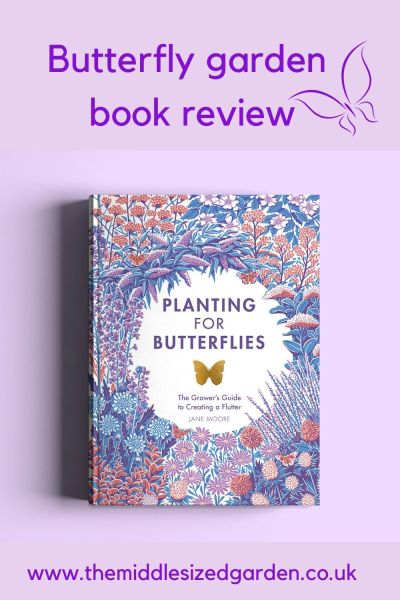
























I can’t think why I’ve never looked into your blog, just follow you on YouTube I’m your viewer from Buenos Aires). This blog is simply wonderful! It’s now on my favourites list!
Thank you!
The best thing you can do to attract local butterflies is to build a native plant garden with plants that are super-local to your site.
That’s a good idea.